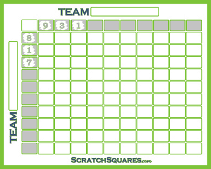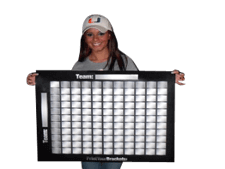| How to Play Cornhole |
|---|
|
What is Cornhole? Cornhole is a popular backyard game that has seen recent explosive growth all across the United States. The overall object of the game is for players to throw corn filled bags toward cornhole boards, trying to either land the bags on the board or get the bag in the hole. The game is played with partners who stand at opposite ends. The Boards There are 2 Cornhole boards per set. These are 2' wide x 4' long and made of plywood that is finished/sanded on the top side. The front of the board is raised 4" off of the ground and the board is angled up so that the back of the board is 12" off of the ground. There is also a 6" hole on top of each board. Many sets of boards use 2"x4" frames and have fold up legs, these are excellent for storage and work well for travel. There are also fully enclosed boards as you can see here in our Cornhole Building Plans where the front, back, and both sides are fully enclosed. These make for very sturdy boards, and also keeps the bag inside the board when it goes through the hole. Board Distance The distance between the boards should be 27ft from the front of one board to the front of the other. Visit our How Far Apart are Cornhole Boards page for a complete description of the board layout. The Bags Cornhole bags are 6" x 6" in size and filled with 14-16 ounces of corn feed. The material used is duck cloth and can be bought in many colors from your local fabric store. Who Throws First? The very first throw of the game should be determined by a coin toss, paper rock scissors, or something similar. For the remainder of the game the team that scored that last point will throw first. It is a huge advantage to have first throw, it gives you the option of placing the first bag directly in front of the hole, which makes it difficult for your opponent to have a big round. Keeping Score? Opponents alternate turns, tossing 1 bag each until each player has tossed their 4 bags. A bag that lands on the board is 1 point and each bag that goes in the hole is 3 points. Points in each round cancel each other out so that only 1 player(or none) scores points in each round. Example: If player A lands all 4 bags on the board and player B lands 3 bags on the board and 1 in the hole, player B would receive 2 points(6 minus 4). If a bag hits the ground and then lands on the board, it does not count and should be removed immediately, before the next bag is thrown. Skunks Winning the Game The first team to score 21 points or more at the end of a round is the winner. You do not need to win by 2 or more points. Going back for going over 21 I could have added this to the "Winning the Game" section, but due to my strong thoughts against this method I thought I would put it in its own section.
Some folks play that if you happen to not get exactly 21, but instead go over 21, for some crazy reason you should go back to 13. Which I think is preposterous! Why in the world should a team that I just beat 21+ points to 5 have a chance to keep playing the game because I got 1 in the hole instead of just on the board. This type of game only benefits teams that would typically be on the losing end. An example that really irks me is when I have 20 points and make my first throw and land it on the board, giving me 21 exactly. My opponent throws and misses the board, now instead of me racking up some points I have to intentionally throw my bag off of the board. Yes, you're probably thinking that is silly, which are my thoughts exactly. For what its worth, the real rules of Cornhole state that a game is won by the first team to score 21 or more points. So, the "you can't go over" rule is just a variation that some players choose to use. Hope you enjoyed the article and if you are planning on running a tournament, check out our Cornhole Tournament Brackets and also our How to run a Cornhole Tournament page. |
Poster Size Brackets
Football Square Scratch-Offs
Large Football Squares
-
Trending Now
-
Tournament Brackets
-
Office Pools
- Football Pools
- Weekly Pick'em
- College Football Pick'em
- Pick'Em Against the Spread
- Confidence Pools
- Football Squares
- 10 Line Football Squares
- 100 Square Grid
- 50 Square Grid
- 25 Square Grid
- College Bowl Schedule
- College Basketball Bracket
- College Basketball Office Pools
- Basketball Pools
- World Cup Bracket
- All Office Pools
-
Game Brackets
-
Cool Tools




